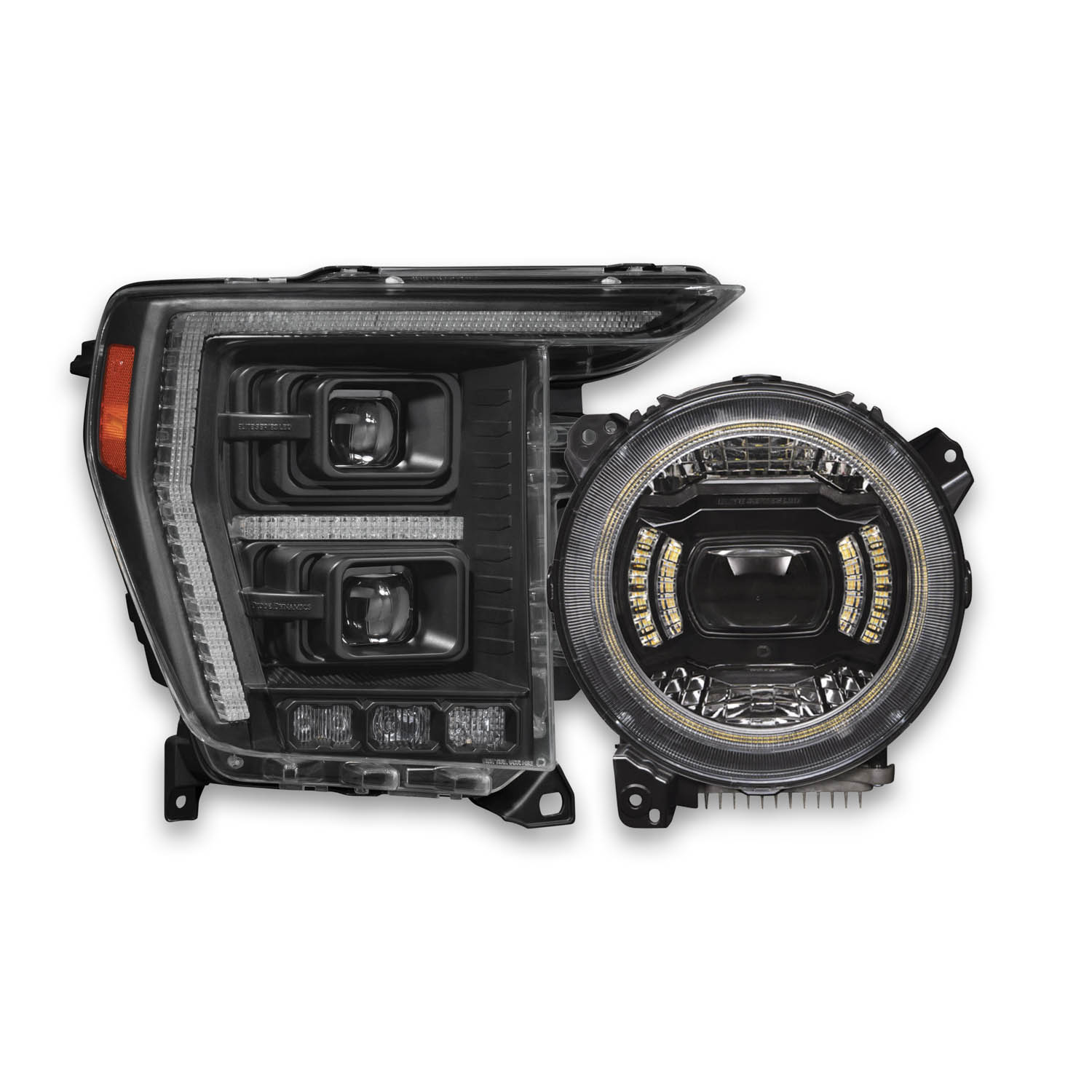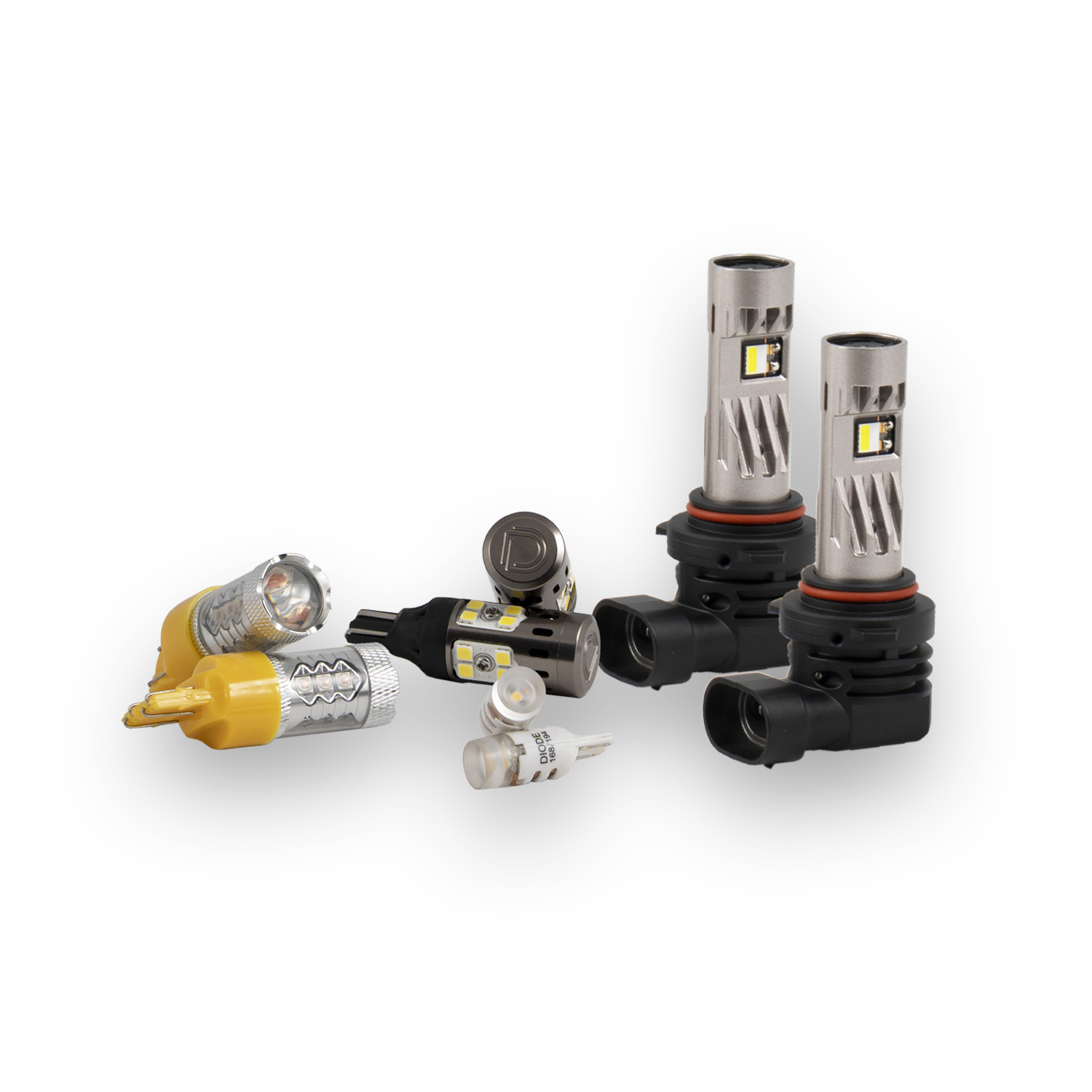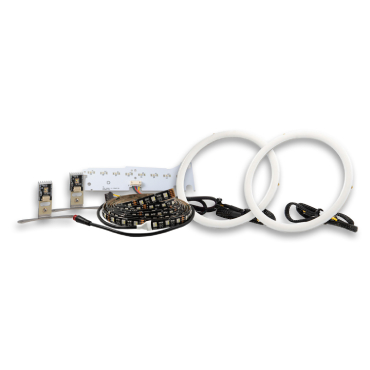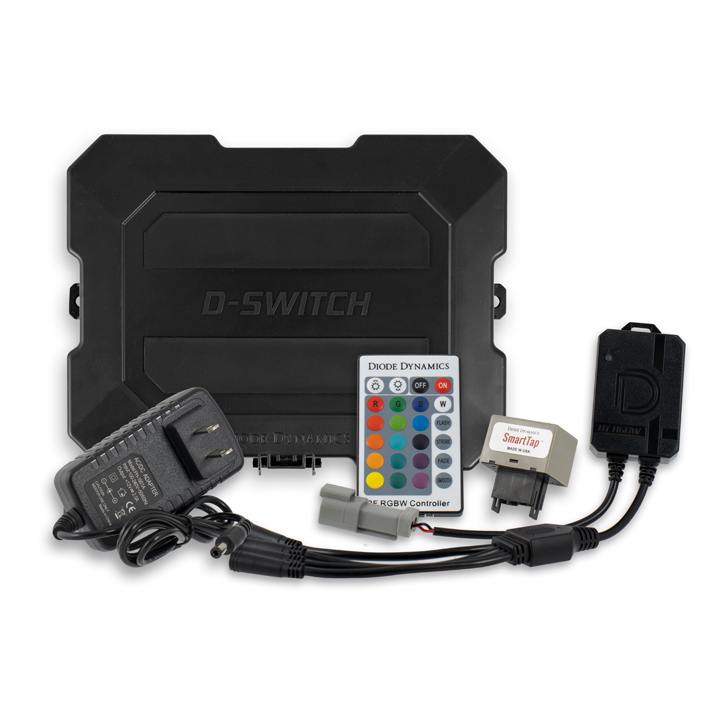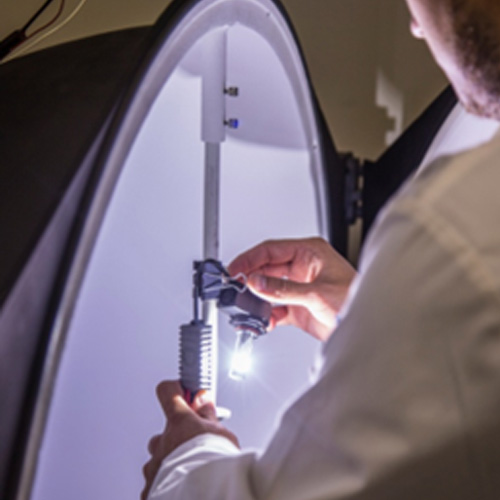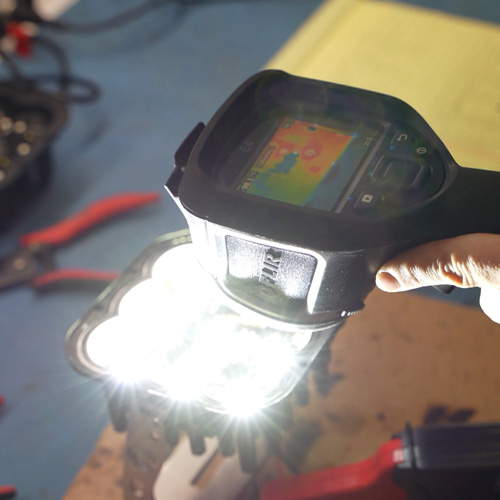HID Ballasts
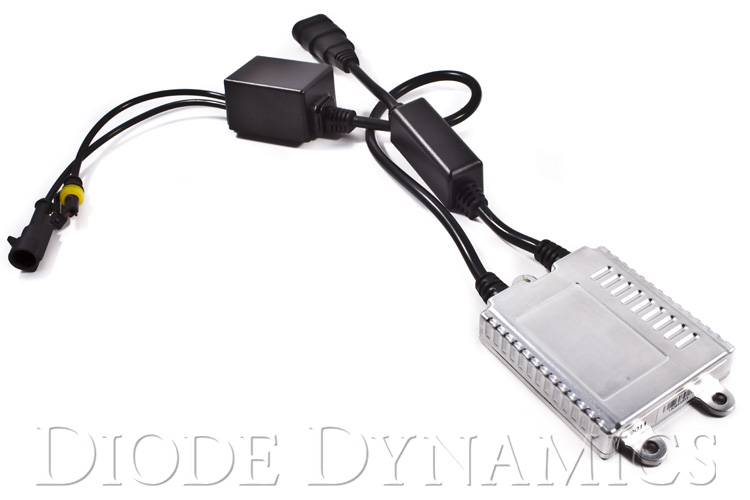
High-intensity discharge (HID) lighting, by definition, has high levels of electrical discharge, to create an electrical arc in the bulb, which emits light. Supplying the power to create, drive, and sustain this arc reliably is no easy feat. The device that does this is called a ballast. It is a complex circuit made up of many components to accomplish specific tasks. To sum it up, one could say that the ballast is a "power controller" in an HID system.
Best HID Ballast
Due to the difficulty of installation and the importance of 100% reliability, most vehicle owners are just looking for the "best HID ballast" possible. Like anything else though, there are a number of factors like quality and performance that factor into what makes a good ballast great, and what it means to be the best HID ballast. Continuing reading below to learn about these factors.
Table of Contents
How HIDs Work
HID systems use an electrical arc, which requires very high voltage to initially create, and then high voltage to maintain as well. This is why an HID bulb won't work without the ballast- it takes a lot more than 12V to create an electrical arc of light.
First, power is input into the ballast. Often, ballast input wires have modules to smooth the power signal coming in, and provide extra resistance to the vehicle's circuit. These are generally known as CANBUS modules. Once there is a good, constant, smooth, reliable input power, the power goes to the primary circuit of the ballast.
The main controller circuit of the ballast has two main functions: it inverts the power into an AC signal, and controls the voltage output as the bulb operates. It does this by sensing resistance in the bulb, thousands of times per second, and adjusting the output.
To get things started, though, a high-voltage pulse must be transmitted to the HID bulb to initially create an electrical arc. This is accomplished with the igniter, which is a capacitor device that can quickly discharge a high amount of power. From there, the controller circuit takes over, and slowly lowers the power as the bulb warms up, and then maintains continuous operation.
Efficiency
All ballasts have an efficiency, measured as the power coming out divided by the power going in. If you send 10W to a device and it outputs 9W, it would be 90% efficient. The rest of the power is lost as heat, which is a reason ballasts might get warm during operation. No electrical device is perfectly efficient.
The best automotive HID ballasts can reach efficiency levels of nearly 90%, with ASIC controllers and high-quality components. The average mid-range ballast is likely around 75-80% efficient, and your "eBay Special" $30 kit ballast will be around 60%. The worst ballast Diode Dynamics has measured was only 52% efficient. Yikes!
Ratings - Truth In Advertising
Most ballasts are rated at 35W, or 35 watts of power. However, this is quite misleading- most suppliers will tell you the input power rating, or how much power is going into the ballast when it's hooked up. Your 35W cheap ballast is probably drawing 35W input, not outputting 35W!
A cheap, low-performance ballast will light up your HIDs just fine, but it might be only 60% efficient, meaning that your "35W" rated ballast may only be outputting 21 watts! That will result in nearly half the potential brightness!
Good, quality HID ballasts provide a true 35W of output power. Diode Dynamics slim ballasts actually output 38 watts! By just switching your ballasts to high-quality ballasts, you'll often improve the performance of your HIDs.
35W vs 55W
Is it really 55W? Before reading this section, remember that most "55W" kits on the market aren't even 55W! A cheaper ballast that is rated at 55W of input power, not output. Nearly all "55W" kits are actually only 35-40 watts, and they are just charging you more for a kit that's really about 35W. You can test this for yourself, as this hobbyist did.
But let's say you pay a bit more, and get a kit that is indeed running on 55W.
More power means a more intense arc of light and more brightness. However, it adds a number of risks, so Diode Dynamics does not recommend 55W HID lighting, for the following reasons:
Heat: More power also creates more heat! As power is increased higher in an automotive HID bulb, the bulb gets less efficient. If you increase 1 watt, you may get an additional 20 lumens. If you increase another watt, you might get only 19 more lumens. Eventually, you won't get any more brightness, just heat. This is called a diminishing return.
HID bulbs are designed for 35W, just like all factory-installed OEM HIDs. Running them at 55W of power is just "overdriving" them. There are no HID bulbs specifically designed for 55 watts of power. That just means that the color is corrected for that much power level- read more about this on the HID Color page.
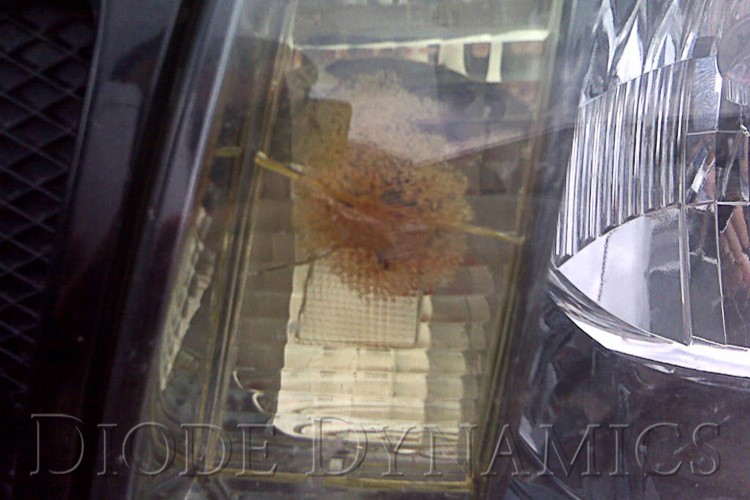
This means that much more heat will be created with a true 55W of power, which is extremely hazardous, as it might melt sockets and housings. It is not cheap to replace a modern headlamp.
Power Draw: If a ballast is outputting a true 55 watts of power, that means it must draw about 65 watts of power, and when it ignites, it draws a great deal more. Your factory wiring is only designed to provide 16-55 watts, depending on the bulb size, and if you wire the HIDs through your factory wiring, that much power draw can destroy factory wiring, and at worst, kill your car's "motherboard," which is usually around $1000 to replace. You must always use a relay with 55 watts, but not all customers will go to the extra trouble to use the HID relay, creating a very dangerous situation.
Bulb Life: The HID bulb emits light by creating an electrical arc between two electrodes. Over time, the electrodes wear down, which is why HID bulbs have a specific lifespan. By increasing the intensity of the arc, you are just "running them hotter," which will wear down your bulb much faster. A bulb running 55W will usually last about half as long as a bulb running 35W.
Brightness: 35W bulbs driven by a true 35W ballast will provide at least 3200 lumens. This is over double the brightness of a factory halogen bulb, and plenty of light for night-time driving. Since there is diminishing returns to additional power, a true 55W kit will only output around 4000 lumens, which is only a 25% increase, and might be too bright for comfortable nighttime driving!
Why is there 55W? Most 55W kits don't actually output 55W, and they are just an upsell. The costs of manufacturing 55W ballasts and bulbs is the exact same, but companies know that they can charge more for it. It's a great way to charge a few more bucks. You may even see "75W" HIDs! Nonsense! Stay away, it's just an upsell.
Not Worth It: If you do find a true 55W kit, it will add excessive heat, electrical draw, and decrease the lifespan of your bulbs. Any company that has its customers' interests and safety in mind will not honestly provide 55W HID lighting.
Piece By Piece
Power Input Connector
By industry standard, all ballasts use a 9006-size input wire. Your HID kit should come with an adapter to convert your socket size, such as H11, so you can plug it into the ballast connector. These connectors should be fully waterproof. The connector may also have an LED built-in, just for convenience, which comes on anytime the ballast is getting power.
CANBUS Module
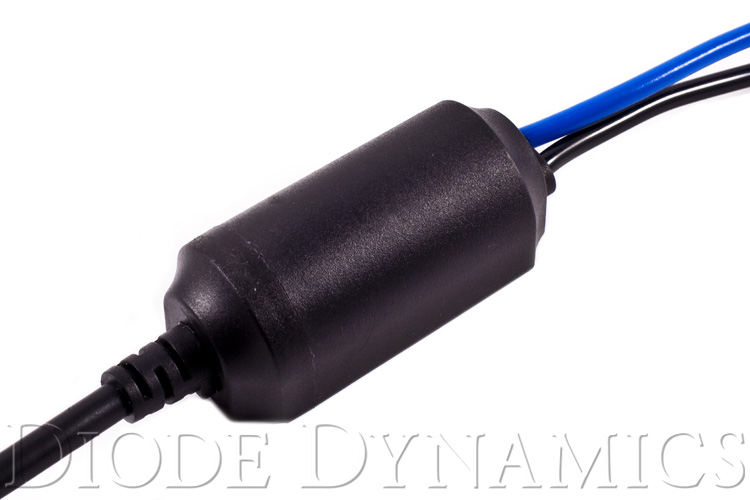
On the power input wire, or built into the input connector itself, capacitors and resistors will often be used in order to smooth any fluctuating power signals coming in, like you would see on a Daytime Running Light circuit. These also provide extra resistance to the vehicle's circuit, to prevent any CANBUS systems from detecting a problem, in case the HIDs use less power than the factory bulb. Not all "CANBUS" modules are the same- some provide more resistance and smoothing than others, depending on the design.
Inverter
The heart of the ballast is an integrated circuit that serves two functions. First, the power must be inverted to provide alternating current (AC) to the bulb. There are ballasts that do not do this, called DC, and you can begin to see why DC is usually much cheaper- you don't even need the inverter part of the circuit! However, DC HIDs are very poor in performance and reliability.
Controller Chip
The most expensive part of the ballast is the controller chip, which is found in all digital ballasts. This has the computing power necessary to constantly measure the resistance in the bulb, based on the electrical arc of light, and then calculate and output the correct power to maintain that arc, so that a constant beam is produced, without any flickering or dimming. This is all dependent on many variables, including the quality and age of the bulbs, the physical temperature, etc.
The most important time for the controller chip to perform is when the HIDs are turned on, right after the bulbs ignite. This is called the "warm up." As the bulb physically warms up, the controller chip must quickly provide appropriate power and quickly adjust output as the bulb warms up. How quickly an HID bulb warms up, and how uniform the light is, depends in part on how quickly the ballast can control this.
If it takes more than a second or two for your HIDs to reach near-full brightness, or the color keeps changing back and forth, you probably have a cheaper controller circuit. These deficiencies will lead to a lower bulb life, as the bulb is stressed more than it would be with a better-controlled power supply.
The best digital ballasts use application-specific integrated circuits, or ASIC chips. These chips have been designed specifically to handle the task of controlling HID bulbs, so they are much better at accomplishing the task. Most digital ballasts use generic integrated circuits, which are much less expensive.
Igniter
The final component along the line is the igniter, which is made up of multiple capacitors, and designed to charge and discharge quickly in order to initially provide the HID bulb with enough voltage to create an arc. It only takes around 70 volts AC to maintain an arc, but when you start it, you need a very high voltage. Most igniters are rated to provide 23,000 volts, or 23kV. Some cheaper ballasts use smaller capacitors, which are cheaper, and provide only 20kV.
The primary capacitor in the igniter is also the widest component in the whole system, so the igniter is usually moved outside of the main housing, which allows the main housing to be much thinner, or "slim." There is no difference in the performance or output when it is moved outside of the housing.
Output Connectors
The output connectors are usually AMP-type standard connectors. These wires should be shielded to reduce electrical interference, but otherwise, they are quite straightforward. Many OEM ballasts have a D2 connector to plug directly into a factory D2-size HID bulb, but there is no difference in quality between the connector types.
Housing and Potting
The circuitry is all housed in a case, which is usually aluminum. Very inexpensive ballasts will have plastic cases. The ballast generates some heat during operation, and aluminum ensures good heat dissipation as well as sturdiness. There are many standardized case designs, but keep in mind that the actual circuit inside can be far different between two ballasts that look the same externally.
All high-quality ballasts are fully waterproofed in a process known as potting, where an epoxy material is poured into the ballast and fills all circuits. The potting material is not cheap, so the least expensive ballasts won't be potted at all, and low-cost ones might only have a single layer of potting covering the components. The best ballasts are fully potted.
Other Features
Although all ballasts will fulfill the basic role of controlling power to an HID bulb, some ballasts have been designed with special features to improve performance.
CANBUS: When a ballast is called "CANBUS," it simply means that it has a module inline on the input signal, which smooths the power input and provides resistance. Some vehicles do not need this at all, when there is a constant input power signal and no CANBUS system. However, it won't hurt to use it in any vehicle, as it can help provide more reliable operation to any application.
Hot Restrike Protection: When an HID ballast warms up a bulb, it delivers a high amount of power, then lowers it as the bulb warms up to normal operation. If an HID bulb has been running, the bulb already has low resistance since it's already hot. If the ballast is turned off and then back on quickly, it would deliver too much power right away, since the bulb is still hot. This will decrease bulb lifespan, as the electrodes in the bulb are worn down when this happens. To prevent this, high-quality ballasts check to see whether the bulb is hot or not before delivering power, to prevent damage.
EMI Shielding: High-voltage signals produce electrical interference, known as EMI. EMI can interfere with your radio and keyfob. This can be prevented by the use of shielded wires and components in the ballast itself. Additionally, ferrite beads can be used, like you might see on your laptop charging cable, as they absorb interference.
Input Power Range: Due to the way electronics work, most HID ballasts can use input power in a range, such as 9-32V. This is simply due to the components in the device. Of course, in an automotive application, you'll be using the ballasts normally at around 13V. Just because a ballast can operate at 9-32V instead of 9-24V doesn't make it any better, so watch out for sellers that promote "32V" HID kits as a selling point. You're going to be using it around 12V, so that's all that matters!

